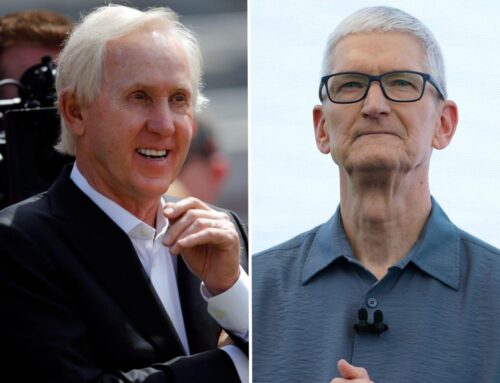Trump Is Hitting Green Energy Hard
June 5, 2025
Trump Is Hitting Green Energy Hard
U.S. clean tech companies face a perfect storm from tariffs and the loss of tax credits.

On May 22, the Republicans controlling the U.S. House of Representatives passed their “big, beautiful” budget reconciliation bill. Among many other measures, the bill rolls back tax credits and other subsidies from the Inflation Reduction Act (IRA), the Biden administration’s flagship legislation to support U.S. clean technology firms, including those involved in renewable energy, battery production, and electric vehicle (EV) manufacturing.
Combined with U.S. President Donald Trump’s tariff plans, the IRA repeal will hit green energy businesses hard. Tariffs on imported components will raise the prices of U.S. clean tech products to such highs that they will struggle to compete both domestically and in international markets. Meanwhile, the repeal of IRA tax credits adds insult to injury by dampening private sector investment in the industry, undermining the United States’ long-term ability to play a leading role in the global green energy landscape.
On May 22, the Republicans controlling the U.S. House of Representatives passed their “big, beautiful” budget reconciliation bill. Among many other measures, the bill rolls back tax credits and other subsidies from the Inflation Reduction Act (IRA), the Biden administration’s flagship legislation to support U.S. clean technology firms, including those involved in renewable energy, battery production, and electric vehicle (EV) manufacturing.
Combined with U.S. President Donald Trump’s tariff plans, the IRA repeal will hit green energy businesses hard. Tariffs on imported components will raise the prices of U.S. clean tech products to such highs that they will struggle to compete both domestically and in international markets. Meanwhile, the repeal of IRA tax credits adds insult to injury by dampening private sector investment in the industry, undermining the United States’ long-term ability to play a leading role in the global green energy landscape.
Tariffs on China make a great starting point to understand how Trump’s policies will harm U.S. clean tech firms. Granted, the United States has made great strides to relocate the production of such goods to U.S. soil in recent years, with manufacturing capacity now close to meeting domestic demand for EV batteries and solar panels.
Yet this will not be enough for the country’s clean tech firms to dodge the tariff bullet, for a simple reason. To source the inputs that they need to assemble green energy gadgets—such as polysilicon wafers for solar panels and cathodes for EV batteries—U.S. firms rely on China, the hegemon of clean tech. Analysts from Bloomberg New Energy Finance, for instance, estimate that Chinese companies produce around 70 percent of the global supply of most of the components that go into finished clean tech goods.
If you thought that the current legal circus around tariffs might provide relief, think again. Most of the measures that damage green energy prospects look set to remain in place.
A closer look at EV batteries shows how tariffs will hit the U.S. clean tech sector hard. Thanks to a recent IRA-fueled investment boom, U.S. firms now have the capacity to build enough American-made batteries to meet domestic demand. Yet the United States remains a long way off from full self-sufficiency: The country’s battery makers import roughly 85 percent of the materials that they use on their production lines, mostly from China.
Trump’s willingness to impose tariffs on just about the entire world (except Russia) means that turning to countries other than China is not a viable option. Alternative suppliers of EV batteries, such as South Korea, also face the prospect of U.S. tariffs come early July. The upshot? Economists reckon that Trump’s tariff salvos could translate into a 17.5 percent rise in the price of U.S.-made batteries by 2026.
But higher prices for U.S.-made clean tech gadgets could soon raise tricky questions. At a time when the global clean tech sector is facing a glut of supply (mostly because of Chinese overproduction), the rationale for onshoring has less to do with economics than with national security. From that perspective, Washington has every interest in creating China-proof supply chains for clean tech in order to limit reliance on Chinese firms and boost the United States’ energy independence.
Tariffs, however, make this easier said than done. It is hard to imagine that U.S. green energy firms could thrive if tariffs fuel the manufacturing costs of their goods to such highs that they are not competitive abroad. What’s more, Chinese clean tech firms could soon choose to cut prices to cement their global market shares (particularly in big markets like Europe or Japan), further weighing on the export competitiveness of U.S.-made green goods.
The United States has—or rather, had, given the likely IRA repeal—a way out of this competitiveness conundrum: subsidizing private investment in domestic production to such an extent that these products could compete against foreign-made goods at home and abroad. Beyond job-creation purposes, this was the point of the IRA tax credits. The legislation envisioned trying to make the United States a leading player in the clean tech sector at a time when China dominates the field.
To the Biden administration’s credit, the United States registered some success in the field: From the adoption of this legislation in the third quarter of 2022 through the first quarter of this year, private investments in electric vehicle, battery, solar, and wind projects totaled $664 billion, a 89 percent rise compared to the same period preceding the Inflation Reduction Act. However, such largesse is over. The high likelihood of a significant IRA repeal has shown that hopes to see the federal government subsidize clean tech firms under Trump are vain.
The cancellation of IRA tax credits would likely have a deep impact on the U.S. clean tech sector at a time when investors have already become cautious. Recent data paints a stark picture. In the first quarter of 2025, U.S. clean tech projects worth $7.7 billion were canceled—the highest level on record and more than four times the total of all cancellations in 2024.
Things could soon get worse: Analysts predict that a repeal of the IRA could threaten the development of around $500 billion in clean tech projects. (Some researchers think this figure could top $1 trillion by 2035; estimates vary greatly since the amount depends on private investment plans.) Amid a bleak outlook, the only silver lining for green energy firms could come from the state level: Some U.S. states mandate the use of renewable sources in the energy mix, offering a lifeline to the sector. In California, for instance, utility providers will need to source 50 percent of power sales from clean energy sources by 2030.
Financial considerations are not the only factor dampening private investment in U.S. clean tech projects. Under Trump 2.0, the climate has become toxic for green energy firms as the administration ramps up criticism of environmentally friendly policies; true to form, Trump calls the IRA the “Green New Scam.”
The fate of Norwegian energy company Equinor’s $5 billion Empire Wind offshore wind project near New York City illustrates this. In April, the secretary of the U.S. Department of the Interior ordered an immediate halt to the construction of this project following a January executive order mandating a pause in future wind projects and a government review of current ones. Construction restarted after a month, but the saga sent chilling vibes to potential investors. In turn, many firms are now adopting a wait-and-see approach—possibly for Trump’s entire term.
The impact of a dent in U.S. investments in clean tech projects looks set to outlive Trump. Even if his policies were to be reversed on the day he leaves the White House, the next three and a half years will probably be lost for the sector. This could prove especially true for projects to develop next-generation technologies such as green hydrogen, direct air carbon capture, or geothermal power—the only green energy fields where the United States is a major global player on a par with China.
The green hydrogen sector—still far from commercial viability and thus particularly dependent on government subsidies—could be hit especially hard; analysts reckon that the end of IRA tax credits could lead to the cancellation of 95 percent of green hydrogen projects. To make matters worse, the Energy Department is considering shutting down its Office of Clean Energy Demonstrations, potentially cutting roughly $9 billion in funding to develop nascent green technologies.
The U.S. clean tech sector faces a perfect storm as it braces for the combined impact of tariffs and the loss of IRA tax credits—two policies that look set to have an impact on the country’s ability to play a leading role on the global green energy landscape well beyond Trump’s term. Perhaps MAGA-inclined voters will find this is well and good—and that the country’s focus should solely be on a policy of “drill, baby, drill” for fossil fuels, as Trump put it.
One small consolation for clean energy advocates could be last week’s executive orders to boost nuclear energy, although those efforts will take many years to come online. But 93 percent of new capacity added to the U.S. electrical grid so far this year has been coming from renewable sources. Even if that capacity is not always available because of the weather, it is not clear how the White House will manage to keep the lights on without green tech amid a boom in electricity demand fueled by power-hungry artificial intelligence data centers.
As Europe, Japan, and other developed economies double down on clean energy investments, that makes the United States an outlier. Trump’s energy strategy (or lack thereof) is yet another item on the growing list of his shortsighted plans.
This post is part of FP’s ongoing coverage of the Trump administration. Follow along here.
Agathe Demarais is a columnist at Foreign Policy, a senior policy fellow on geoeconomics at the European Council on Foreign Relations, and the author of Backfire: How Sanctions Reshape the World Against U.S. Interests. Bluesky: @agathedemarais.bsky.social X: @AgatheDemarais
Stories Readers Liked
In Case You Missed It
A selection of paywall-free articles
Search
RECENT PRESS RELEASES
Related Post




















